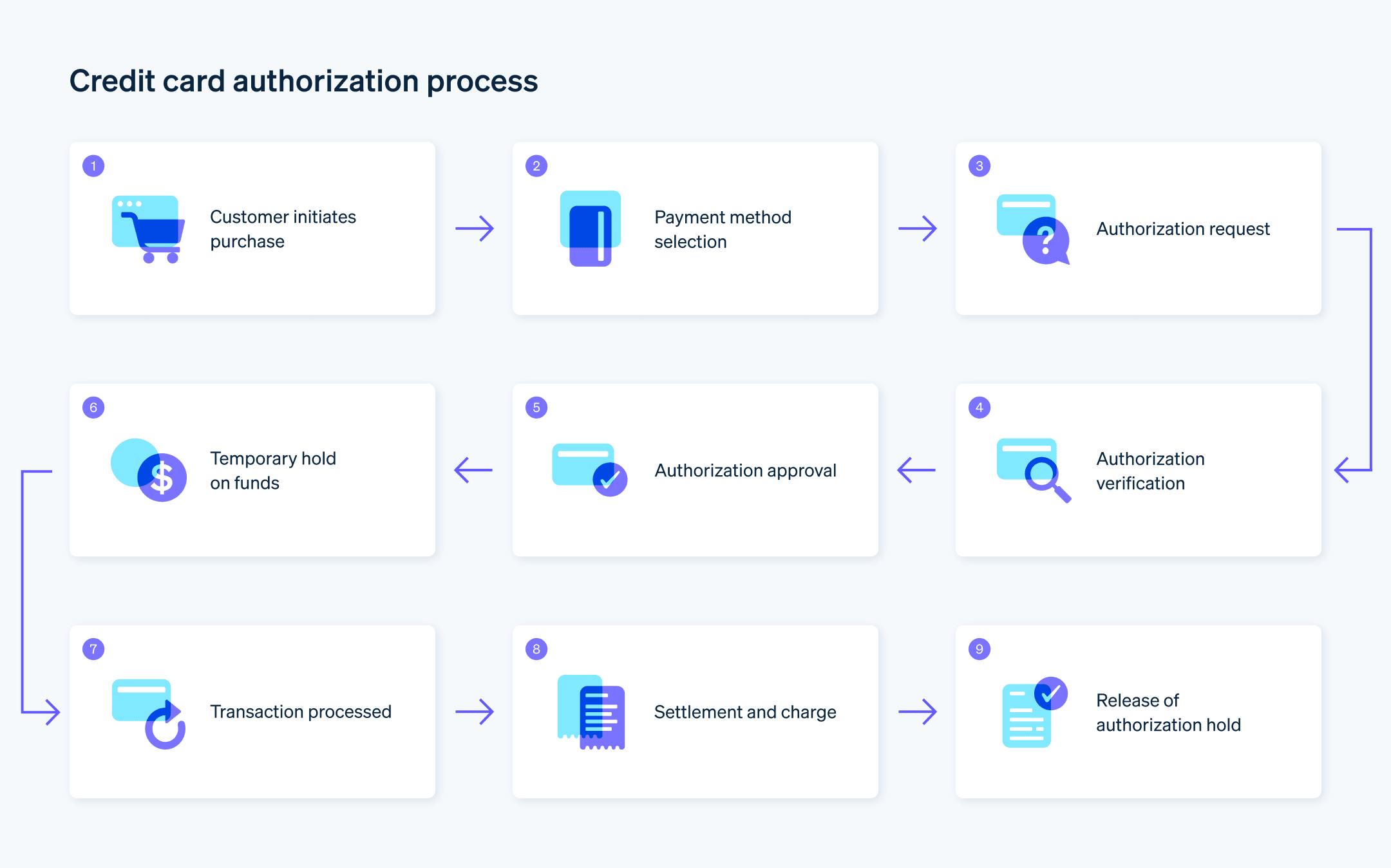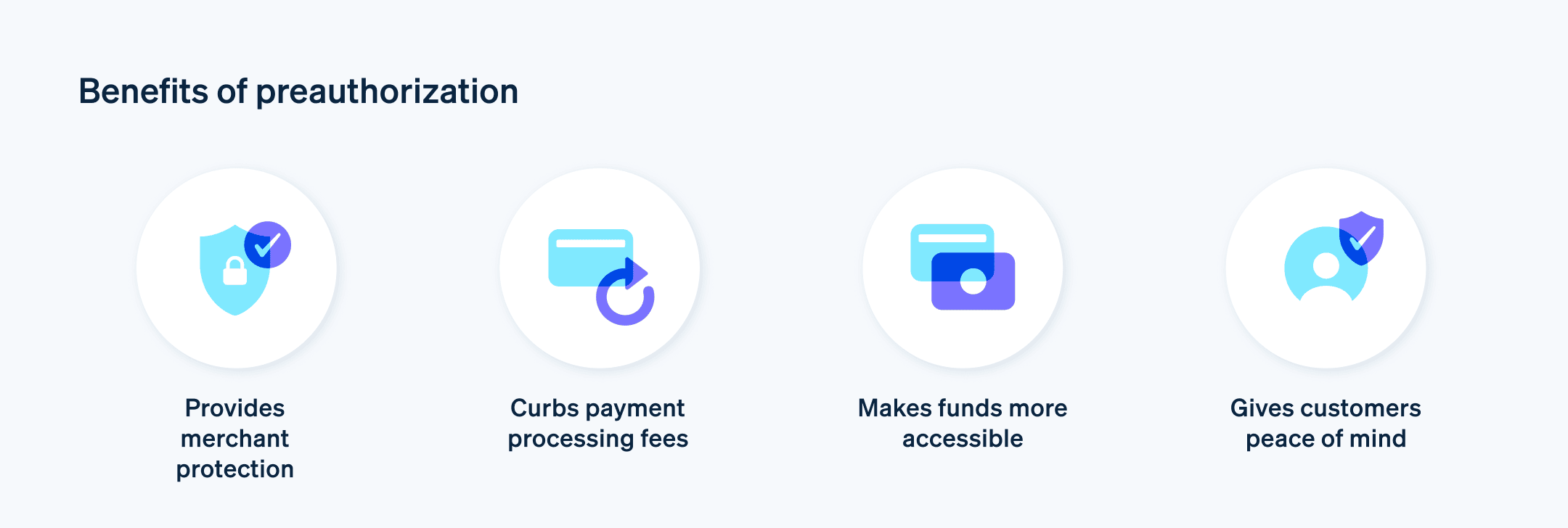预授权扣款是对信用卡或借记卡 可用余额中特定金额的临时扣留。该费用用于检查信用卡是否有效,是否有足够的资金支付交易。该金额由发卡机构 预留,但并未实际转给企业。该费用通常用于在初始交易时不知道最终金额的情况,例如在酒店或加油站。
预授权可确保企业随后能收取实际交易金额。一旦评估并收取了最终金额,预授权就会解除,并从账户中扣除实际金额。如果消费没有完成,预授权金额会在一定期限后返回到银行卡的可用余额中,具体期限视发卡机构 的政策而定。此过程是验证银行卡 是否处于激活状态并能支付潜在费用的标准做法。根据旧金山联邦储备银行的一份报告,2022 年 31% 的支付 都是通过信用卡完成的,这强调了企业认真管理预授权扣款以确保客户交易得到保障的重要性。
下面,我们将讨论企业需要了解的有关预授权的信息。虽然这些费用看似是一个小细节,但对支付体验的效率和整个支付安全 有着重大影响。
目录
- 预授权扣款持续多长时间?
- 预授权扣款如何运作?
- 预授权扣款和信用卡交易
- 使用预授权扣款的优势
- 哪些类型的企业通常使用预授权扣款?
预授权扣款持续多长时间?
信用卡或借记卡的预授权扣款通常持续约 5 到 7 天,但此持续时间可能因发卡行的政策和交易类型而异。有些银行可能会扣留长达 14 天。对于某些企业,如酒店或汽车租赁公司,扣留时间可能更长,可能长达 30 天。
请务必知道,如果实际交易在扣留期结束前处理完毕,预授权就会解除,取而代之的是实际收费。如果交易未完成,或者交易金额低于预授权金额,则将解除预授权。然后,未使用的资金将再次出现在持卡人的账户中。资金释放的时间也取决于企业和发卡行的处理时间。
预授权扣款如何运作?
预授权扣款是企业验证银行卡是否有效以及是否有足够的资金进行交易的一种方法,尤其是在无法立即知道总金额的情况下。以下是该过程的典型工作方式:
发起预授权
当您使用银行卡进行交易时,如果事先不知道最终金额(如在加油站或酒店),企业就会启动预授权。这实际上是在您的银行卡上临时扣留一定金额。扣留资金
预授权金额不是实际收费,而是临时扣留。这笔金额会从您的可用余额中扣除,为未来可能发生的交易保留这些资金。在这个阶段,实际账户余额不会减少。预授权保留在您账户上的时间长短不一。这取决于企业的政策和发卡机构的做法。通常为几天到几周不等。发布最终交易金额
一旦知道您的最终消费金额(例如,当您从酒店退房时),企业就会完成交易。然后,预授权将替换为最终金额的实际费用。释放未使用的资金
如果实际交易金额小于预授权金额,或者交易被取消,则解除对未使用资金的扣留。这意味着预授权金额(或剩余部分)将再次出现在您的账户中。
持卡人应监控预授权,因为它们会暂时降低卡的消费能力,这可能会影响未来的购买。企业将预授权作为一种安全措施,尤其是在最终消费前提供服务或产品时。这是企业防范支付不确定性的一种方式。
预授权扣款和信用卡交易
信用卡 预授权扣款使企业能够验证银行卡,并确保必要的资金可用。这一过程始于企业向持卡人的发卡银行发出请求,以核实信用可用性。然后,银行会从卡中扣留所请求的金额。这种扣留会影响信用额度,但不会立即从账户中扣款,这意味着在预授权阶段不会产生债务。
具体到信用卡,预授权是对持卡人信用额度的检查,而不是像借记卡那样对其银行账户余额的检查。这是一个重要的区别,因为这意味着预授权会减少持卡人随后可以消费的金额,但在交易最终完成之前,预授权不会影响银行账户中的实际资金。
不同类型银行卡在处理预授权方面的差异主要在于资金的来源。当预授权应用于借记卡时,资金扣留会影响账户余额,并有可能导致持卡人在其他交易中收到“资金不足”的警告。反之,信用卡预授权 只会减少可用信用额度。
使用信用卡时,一旦处理了实际扣款,预授权就会解除,然后将实际扣款应用到账户中 — 反映为一笔交易,会增加持卡人的债务。如果最终扣款低于预授权金额,则会取消剩余的扣留,从而恢复持卡人暂时无法使用的信用额度。
不同的信用卡发卡机构对于预授权可以持续多久才会自动解除可能有不同的政策。如果企业没有完成交易,预授权最终会失效,但失效时间可能从几天到几周不等。
企业和发卡机构就每笔交易进行电子通信,预授权是这种通信的一部分。它们使用一套标准化的代码和信息来进行扣款,然后将其最终转化为实际扣款或解除预授权。
管理预授权 — 兼顾支付安全和客户体验 — 是企业交易管理的一个关键方面。了解预授权的工作原理将有助于您优化业务的支付处理和支付系统。

使用预授权扣款的优势
预授权为企业和客户提供了一个财务安全网。对于企业来说,它们是确保客户在企业承诺提供服务之前拥有所需资金或信用的一种方式。此步骤是防止付款争议和拒付 的屏障,在酒店或汽车租赁等行业尤其方便,因为这些行业可能一开始就不知道全部费用。尽早锁定资金有助于避免意外,并确保付款按预期到账。
防止意外扣款
在最终账单可能会膨胀的行业,比如客人可能会使用迷你吧的酒店,或者可能会在最后一刻延期的租车公司,预授权让企业能够预留一笔足以支付潜在费用的金额。这不仅证明企业为其提供的服务获得了补偿,还简化了会计和财务规划,使预测和预算编制更加准确。提高客户透明度
预授权还可以通过消除计费问题来改善客户体验。通过预先保证资金,企业可以放心地提供服务,让他们能够专注于提供最好的客户服务,而不必担心付款跟进。客户利益
预授权对客户来说可能是有利的,因为它们提供了一种无需立即付款即可向服务提供商保证的方法。在大多数情况下,如果不再需要服务,客户可以灵活地取消服务,而无需支付费用。它还可以检查账户状况,而不会受到完整交易的直接财务影响,有助于防止超支。操作简便
企业可以通过使用预授权来减少计费和收款时间,在提供服务前保证资金到位,从而简化交易流程。这些收费还为管理预订和预约提供了一种更有条理的方式,因为资金扣留意味着对服务的兴趣得到确认。简化财务规划
通过预授权,这两个实体的财务管理也得到了改善。企业可以更准确地预测他们的应收账款,而客户可以更密切地监控他们的支出和可用的信用或资金。该过程提供了一层财务监督,有助于更好的预算和财务规划。

哪些类型的企业通常使用预授权扣款?
预授权扣款通常用于在开始时不知道交易的最终金额的情况,或服务开始和完成之间存在间隙的情况。例如:
酒店和住宿
这些机构通常使用预授权来支付潜在的杂费或损害赔偿,在客人的信用卡上保留一定的金额。汽车租赁服务
预授权用于扣留一定金额,以支付租金、保险和可能造成的损害的押金。加油站
对于加油站付费服务,预授权用于验证银行卡是否有足够的资金来支付燃料购买费用。餐厅
特别是在顾客开立账单的情况下,预授权用于在计算最终账单前确认支付方式。出售高价值商品的零售店
一些零售商可能会在处理高额交易前对购买金额进行预授权,以确保资金可用。旅行社和航空公司
预订旅行时,预授权用于扣留购票资金以及更改或取消的潜在费用。租赁服务
这可能包括设备租赁、家具租赁或任何最终成本可能取决于所租物品的退货条件的服务。
预授权可以适应各种商业模式,特别是那些涉及预订、租赁或性质可变的服务的商业模式。
本文中的内容仅供一般信息和教育目的,不应被解释为法律或税务建议。Stripe 不保证或担保文章中信息的准确性、完整性、充分性或时效性。您应该寻求在您的司法管辖区获得执业许可的合格律师或会计师的建议,以就您的特定情况提供建议。